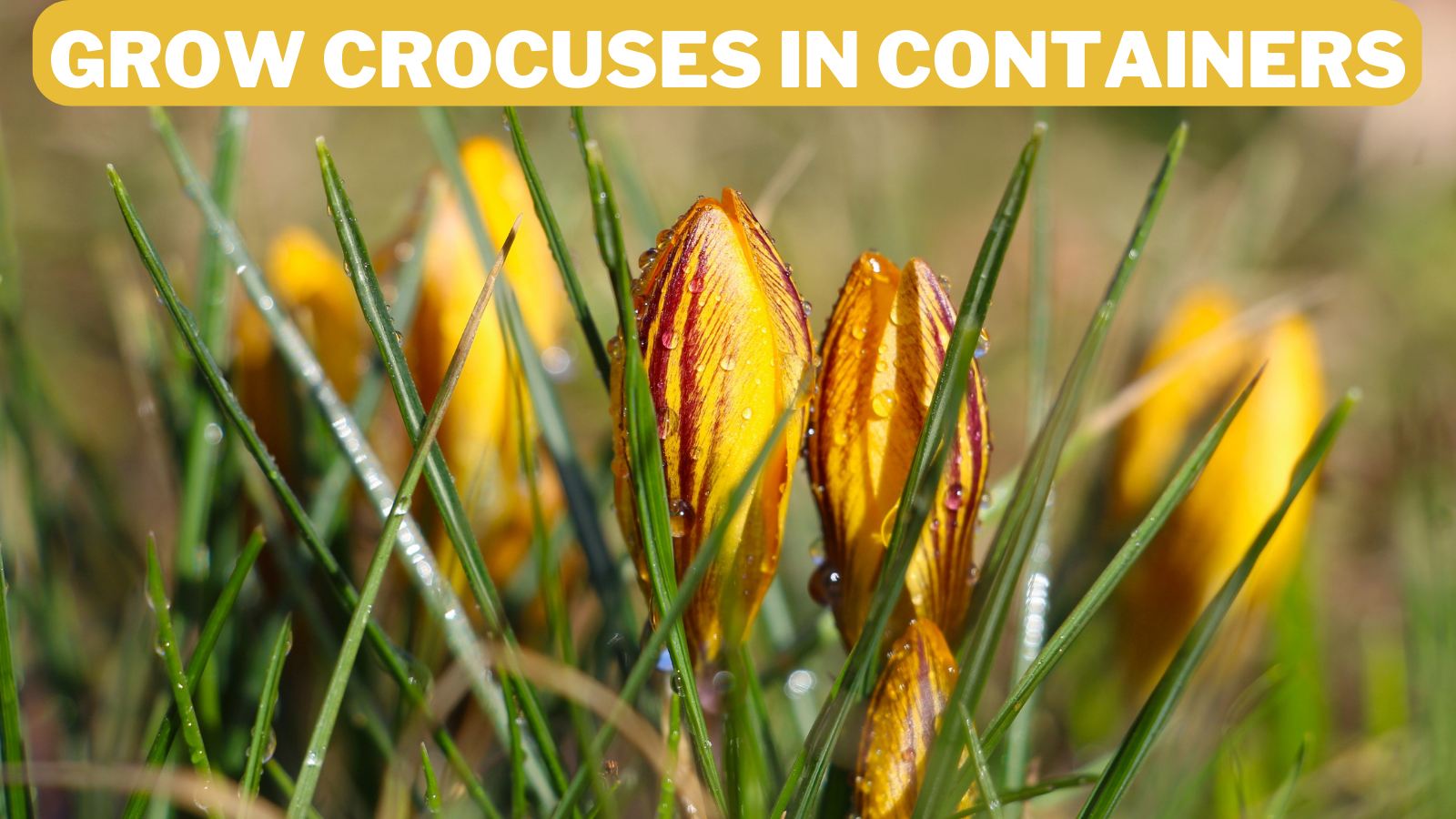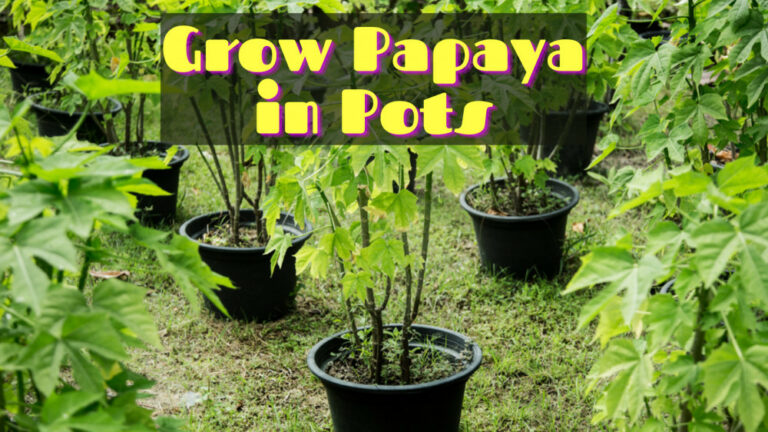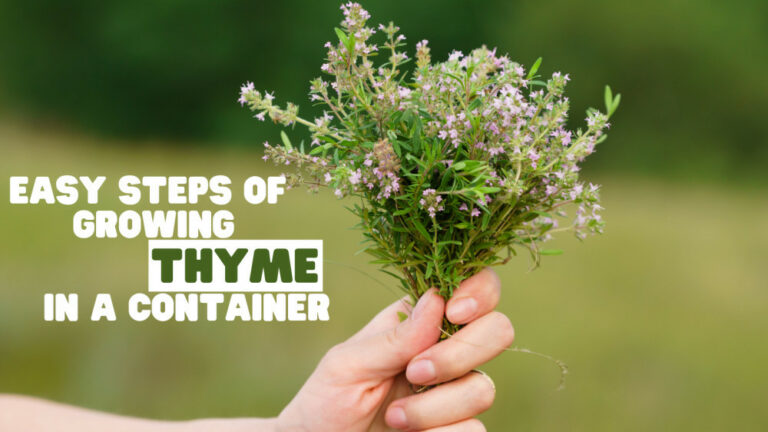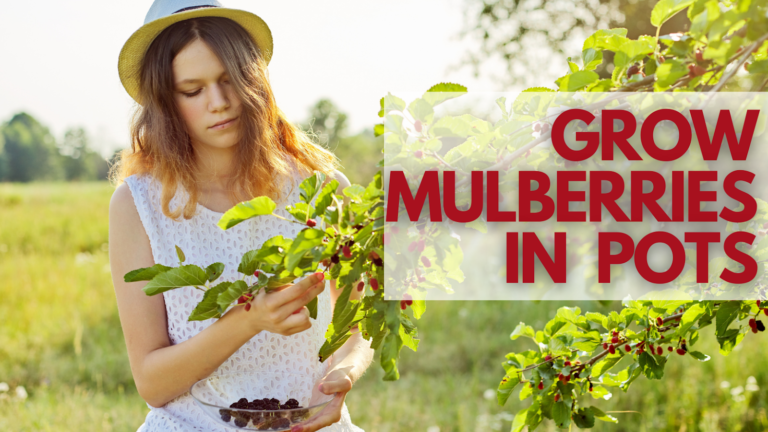Best Steps To Grow Crocuses In Containers
Best Steps To Grow Crocuses In Containers
Crocuses are one of the first signs of spring, with their vibrant flowers popping up from the ground to signal the end of winter. But did you know that you can also grow crocuses in containers?
Growing crocuses in containers is a great way to bring colour to your patio, balcony, or windowsill. In this article, we'll show you how to grow crocuses successfully in containers, including selecting the right container, soil, and planting techniques. So let's get started!

History & Origin Of Crocuses
About 75 low-growing cormose plant species in the iris family belong to the Crocus (Iridaceae) genus. Crocuses are frequently grown for their cup-shaped flowers in the early spring or fall and are native to the Alps, southern Europe, and the Mediterranean region.
Long floral tubes in spring-blooming plants keep the ovary underground and protected from climate fluctuations. In the evening and during bad weather, the blossoms wither.
Western Asia uses saffron as a colour, flavouring, and medicinal ingredient. It is the dried, fluffy orange tip of the lilac or white, autumn-flowering saffron crocus (Crocus sativus).
The primary ancestor of the common garden crocus is the alpine species C. vernus. Another well-known spring flower is the Dutch yellow Crocus (C. flavus), which grows on stony slopes throughout Southeast Europe.
Another well-known spring flower is the Dutch yellow Crocus (C. flavus), which grows on stony slopes in southeast Europe. C. biflorus, a Mediterranean variety with purple undertones and a yellow throat that is occasionally striped, is another popular species.
Crocuses exhibit the typical traits of the Iridaceae family, including the perianth petaloid with two whorls of three tepals each, basal cauline leaves that envelop the stem base, and hermaphrodite flowers that are relatively large and spectacular.
The blooms have three stamens, a loculicidal capsule-shaped gynoecium with three joined carpels, an inferior ovary, and three locules.
Crocus is a tiny seasonal cormous (growing from corms) acaulescent (lacking a visible lower stem above ground) herbaceous perennial genus that is geophytic.
The tunic leaves are fibrous, membranous, or coriaceous and cover the symmetrical, globose or oblate (spherical with flattened tops and bottoms) corms (leathery). Fibrous roots come from the corms.
At least 90 species in the Crocus genus develop from corms resembling bulbs. A relatively small number of species, including some spring bloomers, are frequently cultivated for use in gardens:
- C. tommasinianus (snow crocus),
- C. vernus (Dutch Crocus), and
- C. chrysanthus (golden crocus or snow crocus).
Some crocus species bloom in the fall, such as C. sativus (saffron crocus).
The corms have fibrous and contractile roots that allow them to change their depth in the soil; they can push as far down as 20 cm (8 in). In some species, the roots come out of the basal ridge rather than randomly from the lowest portion of the corm.

Types Of Crocus
Although some gardeners use the vernal equinox as an arbitrary beginning to the flower gardening season, those who plant their preferred crocus kinds may be rewarded two full months earlier.
Crocus flowers are small in stature but huge in beauty; they only need a spot in the landscape that isn't disturbed to grow into attractive colonies.
There are 80 different species of crocus blooms, which are iris-related and can find worldwide. These seasonal blooms can withstand heat and cold extremes. They are little plants that only reach 8 to 12 inches.
They create saffron, the most expensive and well-liked spice in the world. Crocus flower gathering can be laborious, as one kilogram requires 85,000 blossoms to manually collects between dawn and 10 in the morning.
Consider these crocus kinds for your garden if you want to grow crocuses, which have been cultivated since the 1500s and come in hundreds of different varieties.

1. Snow Crocus (Crocus Tommasinianus)
This ancestral light lavender has been a favorite among gardeners since 1847. Snow crocus petals have an almost silvery appearance in the early morning light, giving the flowers a brilliant appearance.
Crocus tommasinianus, also called “Tommies,” is resistant to squirrels. The flowers bloom in the morning and close at night, although they don't bloom on cloudy, wet days. Because it is one of the first crocuses to bloom in the spring, it is known as the snow crocus.

2. ‘Pickwick' (Crocus vernus ‘Pickwick')
The 1925 heirloom “Pickwick” crocus is great for forcing in pots so that you can see the delicate stripes up close. It is as pert as a swatch of seersucker fabric.
This crocus blooms among the first daffodils in early April and is one of the larger spring crocuses. C. vernus, a species with numerous variations known collectively as Dutch crocuses and prized for their enormous flowers, includes the cultivar known as “Pickwick,” which is highly well-liked.

3. ‘Jeanne D'Arc' (Crocus vernus ‘Jeanne d'Arc')
The ‘Jeanne D'Arc flower's crisp white blooms look their finest when grown naturally on a lawn. Because they prefer to remain on the dry side during dormancy, crocus blossoms thrive in lawns that don't receive a lot of summer irrigation. This is a different variety of Dutch Crocus (C. vernus), which typically blooms a little later than the early snow crocuses.

4. ‘Zenith' (Crocus vernus ‘Zenith')
Zenith can refer to a peak or a point in the sky directly above the viewer. So, is this cultivar's name a reference to its petals' ethereal blue or the fact that it does well in alpine environments? Gardeners will concur that this recent Dutch contribution is valuable to the spring garden, regardless of the method.

5. ‘Grand Maitre' (Crocus vernus ‘Grand Maitre')
The gigantic purple crocus known as the “Grand Maitre” blooms a little later than most other species, allowing you to stagger and lengthen bloom dates.
The petals spread widely on bright days to display the contrasting orange stamens inside. If the foliage persists until it withers, typically approximately six weeks after flowering, “Grand Maitre” corms will proliferate in lawns.

6. ‘Skyline' (Crocus chrysanthus ‘Skyline')
Like “Pickwick,” “Skyline” has striated petals but with a blue tint rather than a purple one. Although this crocus isn't often offered on the market, you might be able to obtain it through garden swaps and specialized online nurseries.
This is a variety of C. chrysanthus, another species occasionally called a snow crocus. Since many variations are golden yellow, it is occasionally called the “golden crocus.” Early on, before the Dutch crocuses, “Skyline” blossoms.

7. ‘Zwanenburg Bronze' (Crocus chrysanthus ‘Zwanenburg Bronze')
The reddish tint on the early blooming variation “Zwanenburg Bronze” petals is unusual in the crocus world. Try planting this crocus in raised beds or pots to enhance the aroma since it is more fragrant than most. One of the simplest crocus kinds to grow and one that easily naturalizes is “Zwanenburg Bronze.”
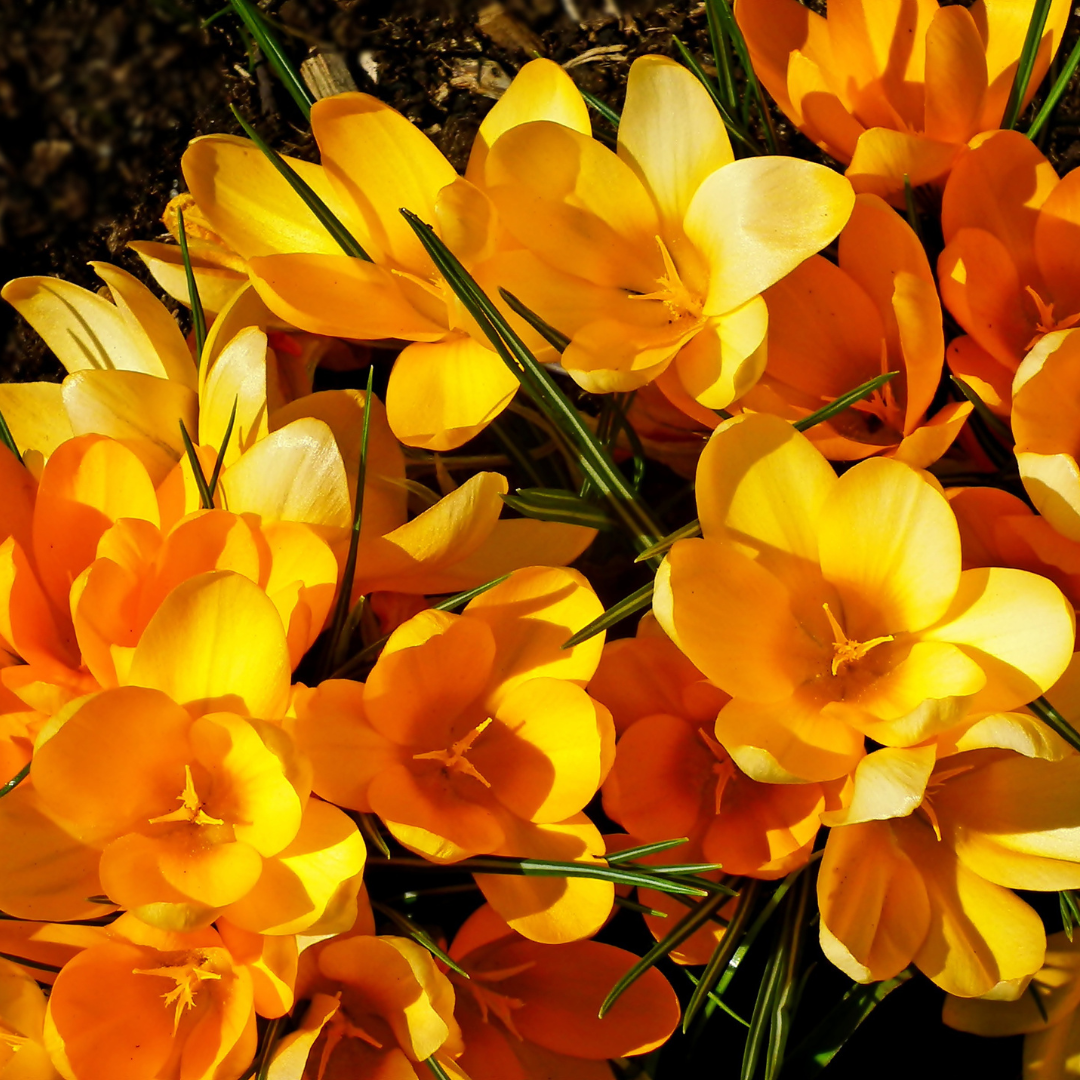
Steps To Grow Crocus In Containers
The only thing you need to know to take care of crocus bulb containers is how to develop crocus plants from a bulb, or more precisely, a corm, a structure resembling a bulb. Not only do crocuses make stunning yard decorations, but they also make excellent inside plants.
Crocuses are perfect for bringing early colour indoors in window boxes, pots, or other containers. The information about potted crocus that follows will teach you how to do this.
Crocuses fill the garden in the spring and fall with a burst of colour. From late winter on, carpets of the tiny purple, yellow, and white flowering corms create a cheery spectacle.
They also offer pollinating insects emerging from hibernation a much-needed source of honey and pollen. Crocuses are spring bulbs that are native to Eastern Europe. They are suitable for growing in pots and naturalizing in grass.
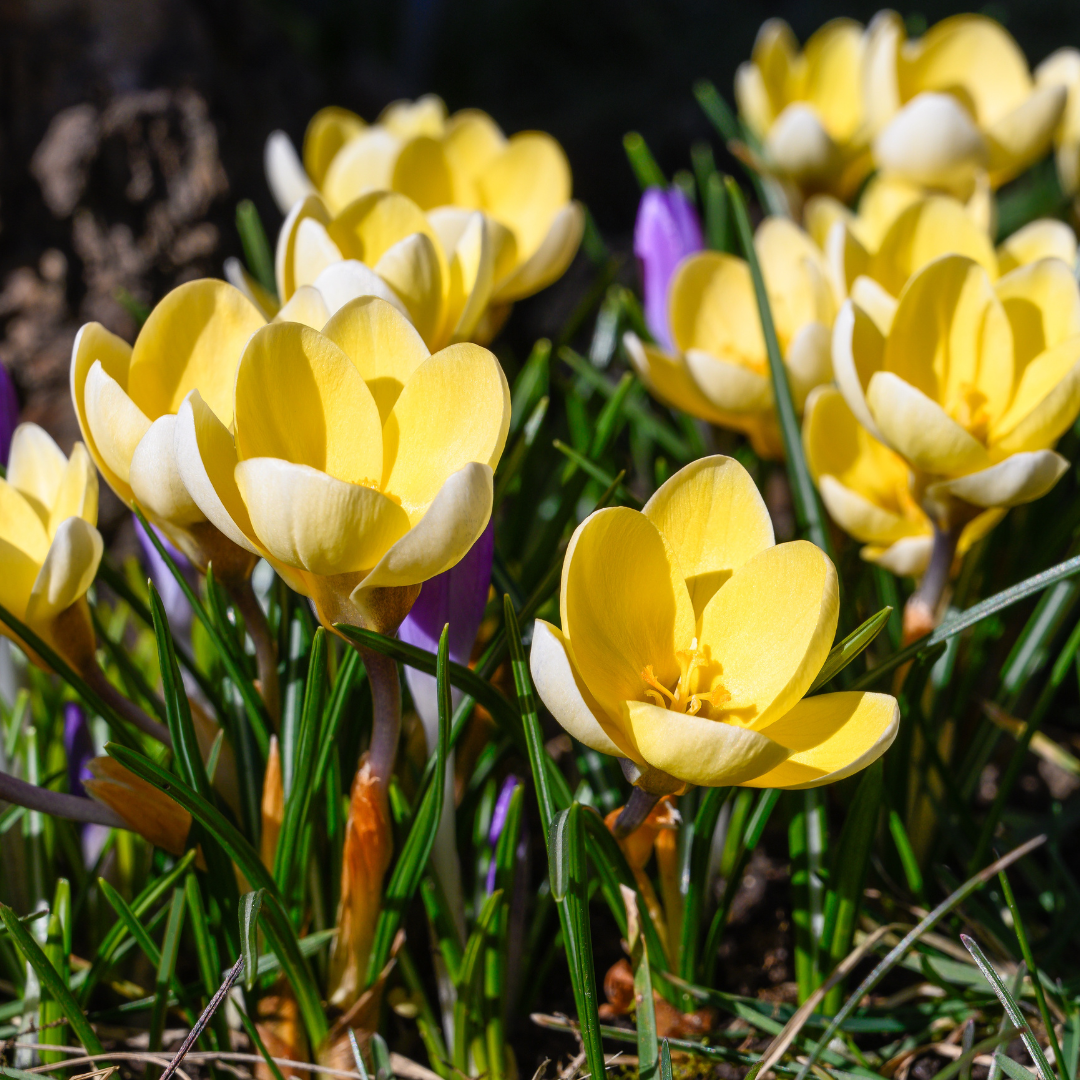
Location Requirements Of Crocuses
Plant the corms for an early spring display between September and November. Colchicums and crocuses with autumnal blooms can plant in late summer to provide colour in the early fall.
The majority of crocus cultivars require a sunny, open location for planting. They'll flourish in grass and turn into a stunning spring meadow. Some species, like crocus gregarious, may grow in partial shade and require moist but well-drained soil.
Container Requirements Of Crocuses
Any object with drainage holes deep enough to hold the bulbs and a few inches of soil can be used as a container. The distance between the bulb's tip and the pot's rim should be one inch.
For instance, use a 6-inch-deep container for a 2-inch-tall daffodil bulb (3 inches of soil, 2 inches for the bulb, 1-inch space at the top). Use a 5-inch-deep pot for a 1-inch-tall crocus bulb (3 inches of soil, 1 inch for the bulb, 1-inch space at top).
You can experiment with other soil depths and spacing if your containers need to fit these sizes. Just ensure at least 2 inches of earth cover the bulbs.
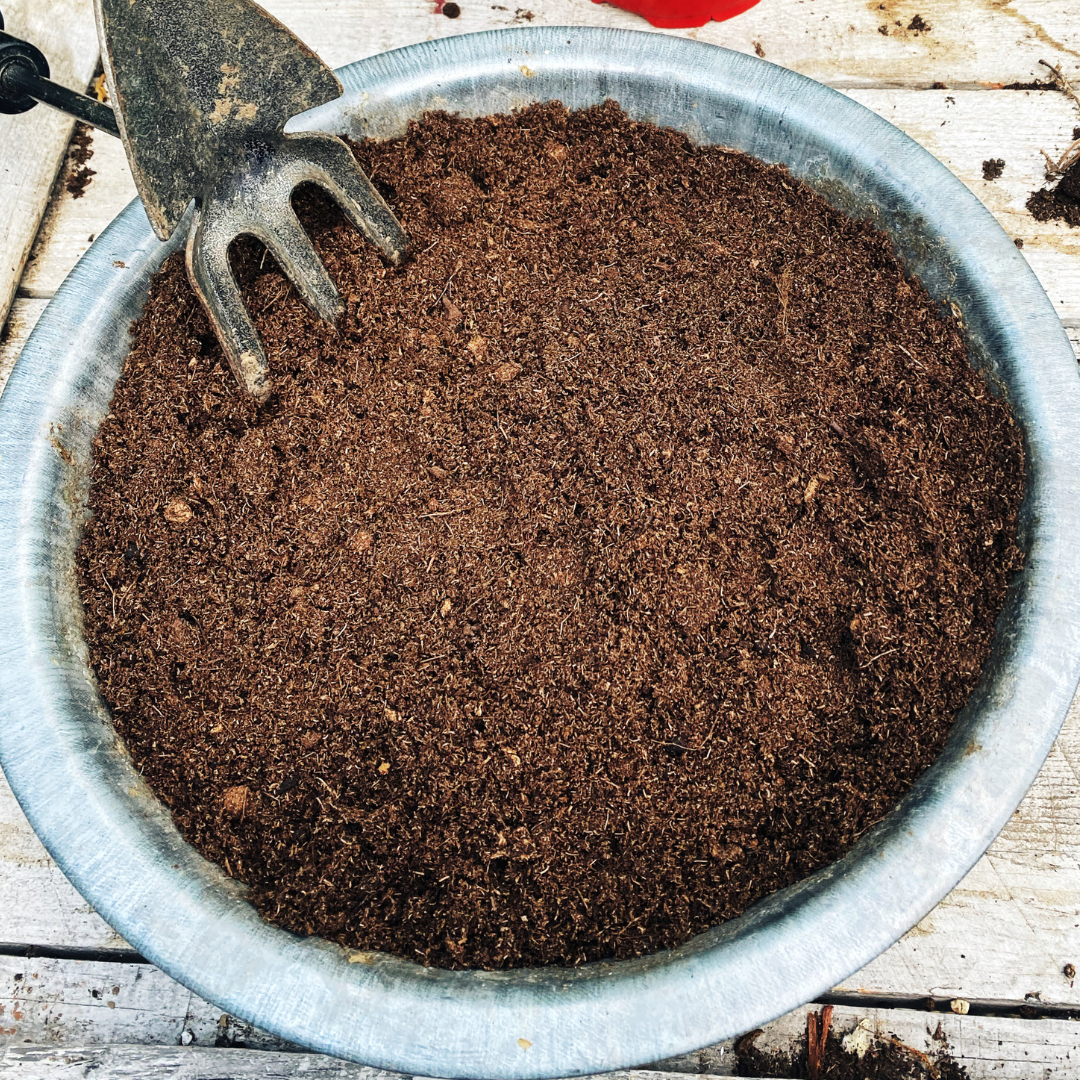
Soil Requirements Of Crocuses
Use any packaged potting mix that is designated for use with indoor plants. Simply allow the mixture to drain freely and keep its moisture.
Use the recommended amount of fertilizer in the potting mix, such as granular 5-10-10 or 9-9-6 bulb formulations. Plant in peat-free compost-filled pots at a depth of 8 to 10 cm (3 to 4 in). You want to shove them in very tightly, almost touching.
Sunlight Requirements Of Crocuses
Crocuses grow best in areas with good soil drainage and full to partial light, whether you're putting them in garden beds or containers. Although they can grow in partial shade, crocuses prefer full sun (6+ hours of direct sunlight daily). Work organic matter, such as compost, into the soil to a depth of at least 10 inches before planting.

Watering Requirements Of Crocuses
Continue to water until the surface is touchably dry. Crocus corms will decay if you overwater them, so be careful. Give crocus at least four to six hours of sunlight daily if growing inside.
Water the crocus beds if the weather becomes dry over the autumn, but avoid sopping the soil. Before winter arrives, mulch the beds.
Remove thick mulch from crocuses and snowdrops in late February to allow the shoots to emerge. To offer protection from frost in the late season, leave a thin layer of leaves.
Fertilizer
There is not much fertilizer needed for crocuses. You must wait to trim the leaves until they turn yellow because they store energy in their bulbs. If your soil is poor, a top fall dressing of bulb food or bone meal is a wonderful option.
While crocuses can grow in acidic soil, they prefer neutral to slightly alkaline conditions. When bulbs grow new roots in the fall, it is the ideal time to fertilize them. Early spring is the next perfect time to fertilize as the foliage pokes through the ground.
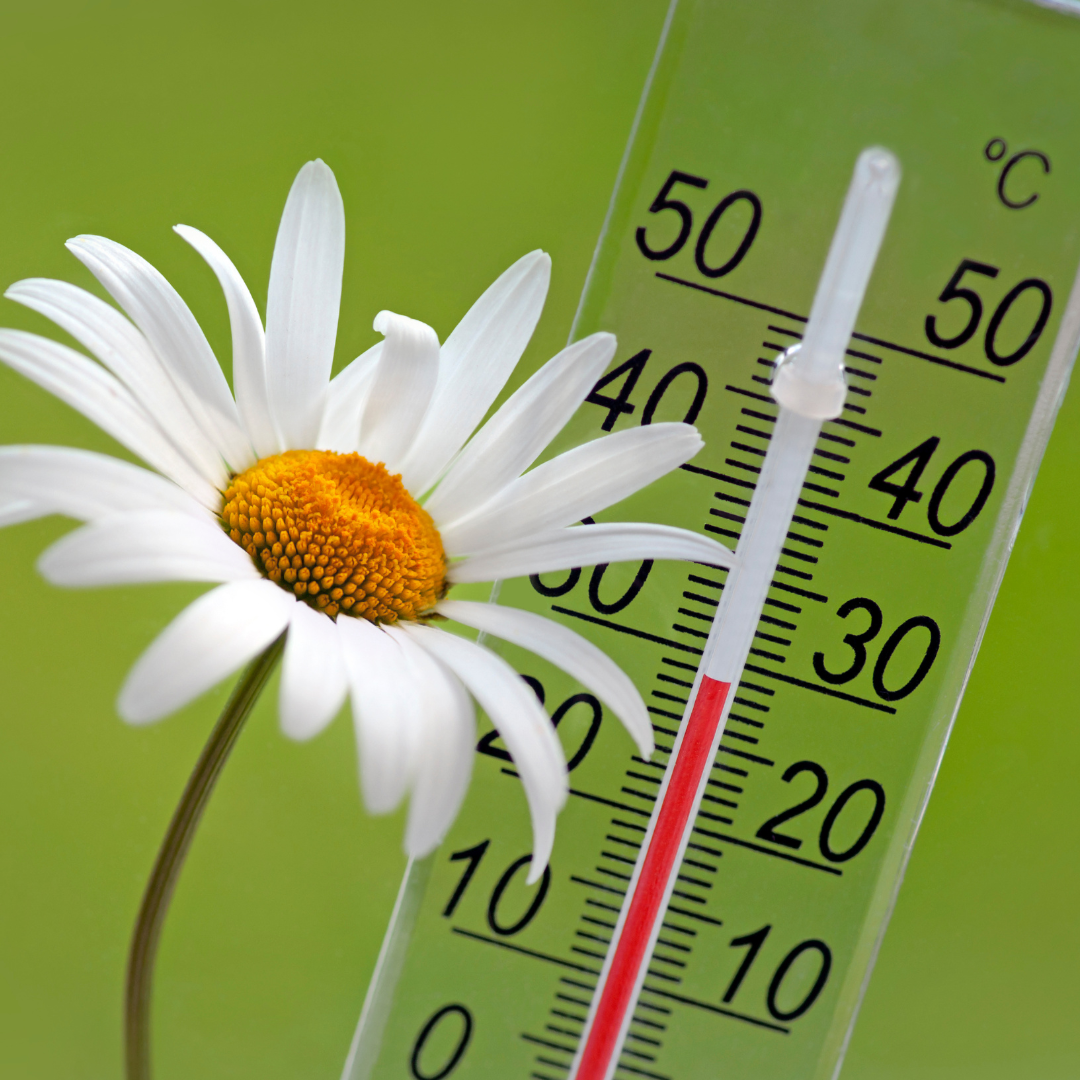
Temperature
Over 75°F temperatures encourage bulbs to expand excessively quickly, which leads to lanky, floppy top growth. The proper light and comfortable temperatures should be available in a site with light shade.
You can use flower rings, pegs, or string to support top growth to ensure your bulbs stand straight. Check the soil's moisture level daily while your bulbs enlarge and bloom, and water as necessary to maintain a moist but not soggy environment. You can relocate the bulbs to a visible location as soon as they bloom for the best viewing.
Planting
Fill the container with 3 inches of potting mix and gently press it down. To give a bulb some traction in the ground, place it there and give it a quarter-turn.
The remaining bulbs should be added, with no more than a half-inch between each. Around the bulbs, add extra potting soil and press them firmly into place with your fingers.
The bulbs' tips should barely protrude through the dirt. Water thoroughly until moisture begins to seep from the drainage holes. If possible, fill any channels or holes in the potting soil with moistened soil.
You can combine different varieties of bulbs in the same pot, but make sure they chose for their ability to bloom simultaneously (for instance, avoid planting early crocuses alongside late-season daffodils).
In deeper containers, plant bulbs in layers, placing larger and smaller bulbs closer to the surface. Plant bulbs apart from one another to avoid stacking them. Planting distinct containers with diverse bloom date varieties will extend the bloom time (early, mid-, and late season).
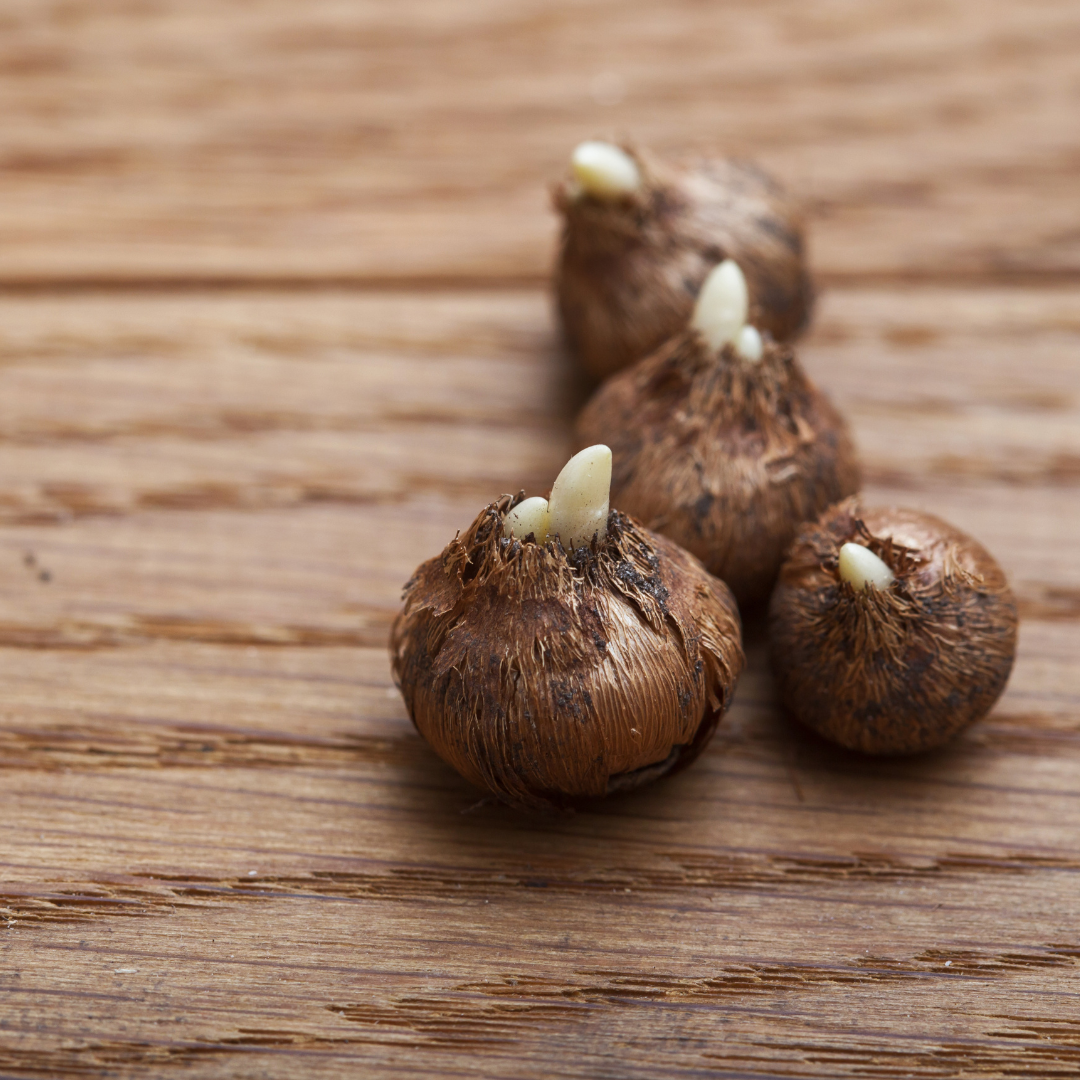
Propagation
You can cultivate crocus plants from seed, but most gardeners use corms with stems that resemble bulbs and come from the mother plant. Plant corms in their planters are 1.5 inches deep.
Crocuses have corms, even though many people refer to them as bulbs. Before replanting, dig up the corms from an earlier planting and divide them. Before replanting the corms in the fall, you can store bulbs and grow another crop in the same pot. Use fertilizer for bulbs.
Pruning
Crocuses don't need to prune; after flowering, remove the leaves when it has died back. As it accumulates food and energy for the upcoming season, it is crucial to let it die naturally. You might be tempted to remove the foliage of your crocuses if they have grown into sizable colonies before it wilts. Leave the leaves alone, though, as long as they are still green.
Pests & Diseases Of Crocuses
Sometimes, crocuses begin to produce fewer and fewer flowers until they eventually stop blooming altogether. The reason is that their location is getting too shaded; perhaps an adjacent evergreen tree is spreading its branches outwardly too far.
This can also be a concern because it decreases the quantity of rain that gets through and increases the amount of shade. Another factor that causes crocuses to stop blossoming is overcrowding. Lift, divide, and replant your crocuses in the late summer if they produce leaves and few flowers.
Crocus corms are a favourite food for chipmunks and squirrels to dig out and consume. In the years following planting, the roots frequently drag the corms down further, making newly planted corms typically more vulnerable.
Lay chicken wire horizontally over your freshly planted clumps to prevent the corms from being dug up. Pick the netting with the smallest mesh size possible because chipmunks and squirrels can squeeze through tiny holes. Chipmunks and squirrels reportedly have less preference for Crocus tommasinianus.
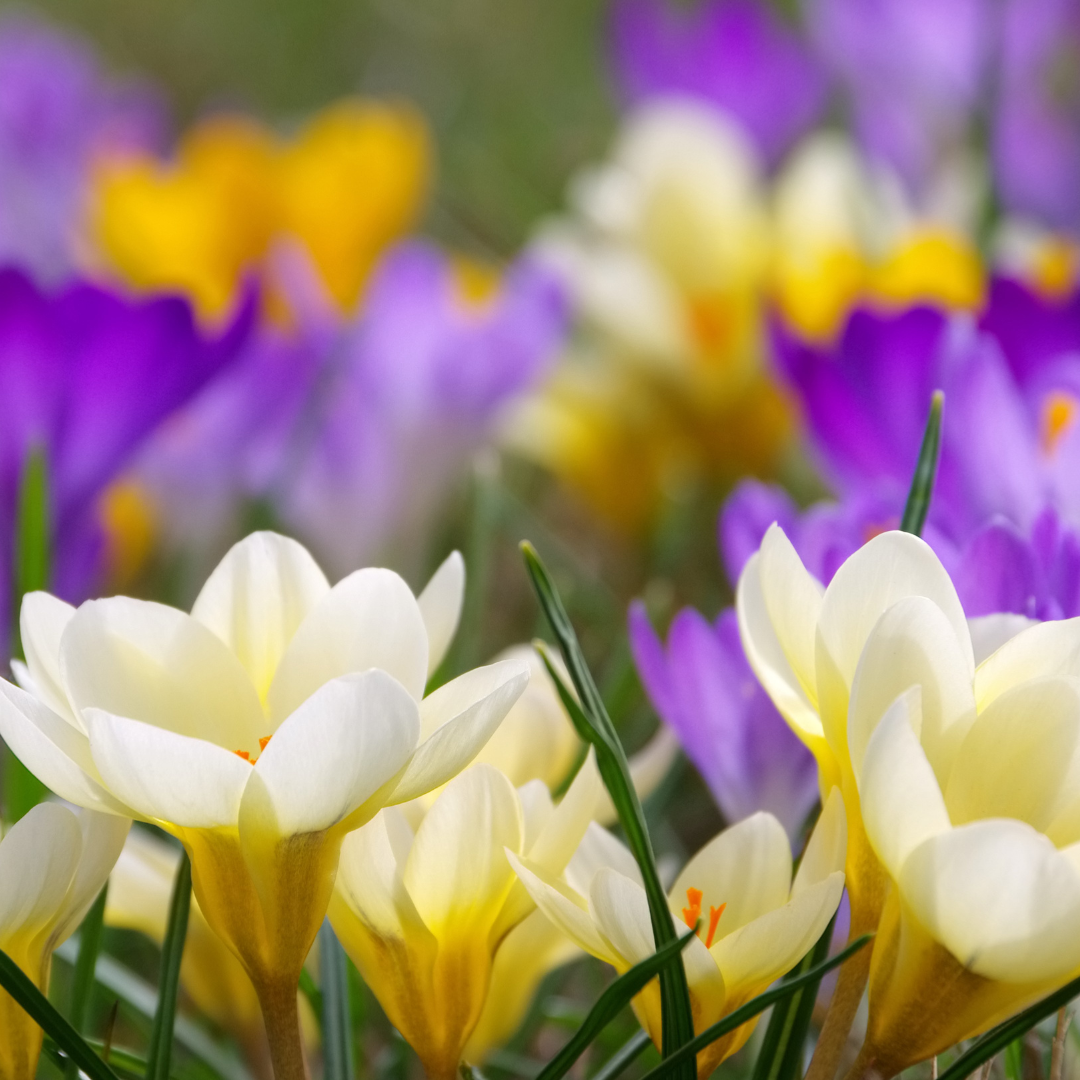
Conclusion
Growing crocuses in containers is an easy and rewarding way to enjoy these beautiful flowers. Following the steps outlined in this article, you can successfully grow crocuses in containers and bring a burst of colour to your outdoor or indoor space.
Remember to choose the right container size, use well-draining soil, and plant the bulbs at the right depth. Additionally, provide adequate water and sunlight for your crocuses to thrive. With a little care and attention, your container-grown crocuses will bring joy and beauty to your home in the springtime.
I trust you enjoyed this article on the Best Steps To Grow Crocuses In Containers. Please stay tuned for more blog posts to come shortly. Take care!
JeannetteZ
>>>Please click here to read my all-inclusive article about Container Gardening<<<
>>>Are you interested in homegrown herbs and medicine? Please click here to find out more about it!<<<
Your Opinion Is Important To Me
Thoughts? Ideas? Questions? I would love to hear from you. Please leave your questions, experience, and remarks about the article the Best Steps To Grow Crocuses In Containers in the comments below. You can also reach me by email at Jeannette@Close-To-Nature.org.
Disclosure
This post may contain affiliate links. As an Amazon Associate and other affiliate programs, I earn from qualifying purchases at no extra cost to you. Please read my full affiliate disclosure.
You might also enjoy these blog posts:
Best Steps To Grow Irises In Containers
Best Steps To Grow Primulas In Containers
Best Steps To Grow Heucheras In Containers
Best Steps To Grow Ivy In Containers
Best Plants For Winter Hanging Baskets

